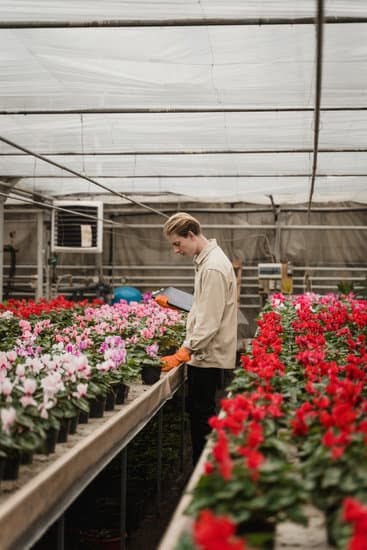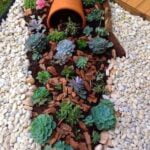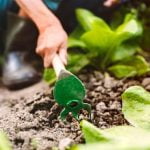Looking to start your own vegetable garden? Look no further. In this article, we will provide you with all the DIY vegetable gardening ideas you need to get started. Growing your own vegetables not only provides you with fresh, nutritious produce but also offers the satisfaction of a rewarding DIY project. Whether you have a spacious backyard or just a small balcony, there are plenty of creative and practical ideas for growing your own vegetables at home.
When it comes to DIY vegetable gardening, selecting the right vegetables is essential for success. We’ll provide tips on choosing the best vegetables to grow based on your climate, soil type, and available space. Additionally, we will guide you through planning and designing your vegetable garden step-by-step, from laying out the garden to maximizing productivity through companion planting and proper spacing.
But that’s not all – our comprehensive guide also includes instructions on preparing the soil for planting, caring for your vegetables, building garden structures such as raised beds and trellises, harvesting and preserving your harvest, as well as troubleshooting common gardening problems. Whether you’re a beginner or an experienced gardener looking for new ideas, this article has something for everyone interested in cultivating their own delicious produce.
Selecting the Right Vegetables for Your Garden
When it comes to starting your own DIY vegetable garden, one of the key considerations is selecting the right vegetables to grow. Not all vegetables thrive in every climate, soil type, or available space, so it’s important to choose wisely. By selecting the best vegetables for your specific conditions, you can increase the likelihood of a successful harvest and minimize potential challenges.
One of the first steps in selecting the right vegetables for your garden is considering your local climate. Some vegetables, such as tomatoes and peppers, prefer warmer temperatures and plenty of sunlight, while others, like lettuce and spinach, thrive in cooler conditions with some shade. Researching which vegetables are well-suited for your climate can help you make informed decisions about what to plant.
In addition to climate considerations, assessing your soil quality is essential for choosing the best vegetables for your garden. Certain vegetables require specific soil conditions to thrive, such as well-draining soil for root crops like carrots and radishes, or fertile, moisture-retentive soil for leafy greens like kale and Swiss chard. Understanding your soil type and making any necessary improvements through composting or organic fertilizers can help ensure that your chosen vegetables will flourish.
Lastly, when selecting vegetables for your garden, it’s important to evaluate the available space. For those with limited space, vertical gardening or container gardening may be viable options for growing a variety of vegetables in a small area.
On the other hand, if you have ample space, you can consider planting larger crops such as zucchini or cucumbers that require more room to spread out. By carefully considering these factors – climate, soil type, and available space – you can make informed choices when deciding which vegetables to include in your DIY vegetable garden project.
Planning and Designing Your Vegetable Garden
When it comes to planning and designing your vegetable garden, there are several key factors to consider in order to maximize productivity. One of the first steps is to determine the layout of your garden based on the available space and sunlight.
It’s important to plan for proper spacing between plants to ensure they have enough room to grow and thrive. Companion planting is another crucial aspect of garden planning, as certain plants can benefit from being grown together while others may inhibit each other’s growth.
In addition to spacing and companion planting, maximizing productivity also involves taking into consideration the specific needs of each type of vegetable you plan to grow. Some vegetables require more sunlight than others, while some thrive in cooler temperatures. Understanding these factors will help you design a layout that optimizes growing conditions for each plant.
One popular method for organizing a vegetable garden is using raised beds, which provide better drainage and easier access for planting, weeding, and harvesting. Another DIY idea for maximizing productivity is creating trellises or vertical supports for vining plants such as tomatoes, cucumbers, and peas. These structures not only save space but also promote better airflow and reduce the risk of disease.
Overall, careful planning and thoughtful design are essential for creating a successful vegetable garden that yields a bountiful harvest.
| Vegetable Garden Planning Tips | Benefits |
|---|---|
| Proper spacing between plants | Ensures optimal growth and reduces competition |
| Companion planting | Promotes natural pest control and healthy soil |
| Raised beds & trellises | Maximizes space and enhances accessibility |
Preparing the Soil
When starting a DIY vegetable gardening project, one of the most important steps is preparing the soil. The quality of your soil will directly impact the health and productivity of your plants, so it’s essential to get this step right. This comprehensive guide will walk you through everything you need to know about preparing the soil for planting, including tips for composting, organic fertilizers, and soil testing.
Composting
Composting is an excellent way to improve the structure and fertility of your soil. By creating a compost pile or bin, you can recycle kitchen scraps and yard waste into nutrient-rich humus that can be added to your garden beds.
Compost adds beneficial microorganisms to the soil, improves moisture retention, and provides a slow-release source of nutrients for your plants. This section will cover the basics of composting, including what materials can and cannot be composted, as well as different methods for creating compost.
Organic Fertilizers
In addition to compost, organic fertilizers can help supplement the nutrient needs of your plants. Unlike synthetic fertilizers which can harm beneficial organisms in the soil, organic fertilizers improve soil structure and encourage microbial activity. This section will discuss different types of organic fertilizers, such as fish emulsion, bone meal, and kelp meal. It will also provide guidance on how to apply these fertilizers in a way that maximizes their benefits for your vegetable garden.
Soil Testing
Before you start planting, it’s important to understand the composition of your soil. A simple soil test can reveal important information about pH levels, nutrient deficiencies, and texture. By understanding this information, you can make informed decisions about amendments that may be needed to optimize conditions for plant growth. This section will explain how to take a soil sample for testing and interpret the results to make necessary adjustments before planting your vegetables.
By following these tips for preparing the soil in your DIY vegetable gardening project, you’ll set yourself up for success and create an environment where your plants can thrive naturally. Investing time in such preparations yields rich dividends during harvest season when robust vegetables fill up your baskets rewarding all hard work gone into their production.
Planting and Caring for Vegetables
When it comes to diy vegetable gardening ideas, planting and caring for your vegetables are crucial steps in ensuring a successful harvest. Whether you are a beginner or an experienced gardener, understanding the specific needs of each vegetable will help you cultivate a bountiful garden. Below are some detailed instructions on how to plant and care for a variety of vegetables, including watering, weeding, and pest control.
Planting Vegetables
Before planting your vegetables, it is important to consider the spacing requirements for each type of plant. Some vegetables, such as tomatoes and peppers, require more space to spread out, while others, like carrots and lettuce, can be planted closely together. It is also essential to take into account the amount of sunlight each type of vegetable needs when choosing their planting location within your garden.
When planting your vegetables, make sure to dig a hole that is deep enough for the roots and add organic fertilizers or compost to the soil to provide essential nutrients. Once planted, water the vegetables thoroughly to help them establish their root systems.
Caring for Your Garden
Watering your vegetable garden regularly is crucial for healthy plant growth. Different types of vegetables have varying water needs depending on factors such as weather conditions and soil type. It is important to monitor the moisture levels in the soil and adjust your watering schedule accordingly.
In addition to watering, regular weeding is essential to prevent competition for nutrients and sunlight. Weeds can quickly take over a garden if left unattended, so be sure to remove them regularly by hand or using gardening tools.
Pest Control
Pests can pose a threat to your vegetable garden and may wreak havoc on your crops if not addressed promptly. To protect your plants from pests such as aphids, caterpillars, or beetles, consider implementing natural pest control methods such as companion planting with insect-repelling herbs or introducing beneficial insects like ladybugs.
In some cases where pests become overwhelming despite preventive measures, homemade organic sprays using ingredients like neem oil or garlic can be an effective DIY solution to keep pests at bay without harming your plants or the environment.
By following these detailed instructions for planting and caring for your vegetables – including proper spacing when planting, regular watering and weeding practices, as well as natural pest control measures – you can ensure a successful diy vegetable gardening experience with a healthy and abundant harvest.
DIY Vegetable Garden Projects
If you’re looking to take your DIY vegetable gardening to the next level, consider incorporating some unique and creative projects to enhance your garden and improve productivity. These DIY ideas can not only make your garden more efficient but also add a touch of creativity and personalization to your gardening space. Here are some projects to consider for your vegetable garden:
- Building Raised Beds: Raised beds are a great way to create defined growing areas, improve soil quality, and reduce the need for bending and kneeling. You can build raised beds using materials such as wood, bricks, or even recycled materials like old tires or pallets.
- Constructing Trellises: Trellises are essential for vertical gardening, allowing vining plants like tomatoes, cucumbers, and beans to grow upwards instead of sprawling across the ground. You can construct trellises using materials such as bamboo poles, PVC pipes, or wooden stakes.
- Creating Garden Structures: Consider building other structures such as arbors, pergolas, or even simple A-frame structures for vertical gardening. These structures not only add visual interest to your garden but also provide support for climbing plants and create a more organized and aesthetically pleasing space.
These projects can be tailored to fit any size or style of garden, from small urban spaces to large rural plots. Whether you’re a seasoned gardener or just starting out with DIY vegetable gardening ideas, incorporating these projects into your garden can elevate the experience and increase the productivity of your vegetable harvest. Ultimately, these DIY projects offer the opportunity for personalization and creativity in addition to practical benefits for your garden.
Harvesting and Preserving Your Vegetables
Once your vegetables are ready for harvest, it’s important to ensure that you pick them at the right time in order to maximize flavor and nutritional value. Here are some tips on when and how to harvest a variety of common vegetables:
- Tomatoes: Harvest when they have reached full color and are slightly firm to the touch. Simply twist or cut them from the vine.
- Carrots: Harvest when the tops of the carrots are easily visible above the soil, gently pull them from the ground.
- Zucchini: Harvest when they are still relatively small and tender, using a sharp knife or pruning shears to cut them from the plant.
Preserving your vegetable harvest is not only a great way to enjoy your homegrown produce all year round, but it also reduces food waste. Here are some ideas for preserving your vegetables through canning, freezing, and pickling:
- Canning: Invest in some canning jars and lids to safely preserve your vegetables. Using a water bath canner or pressure canner, you can seal your veggies in glass jars for long-term storage.
- Freezing: Some vegetables are best preserved by blanching them in boiling water before freezing. Once blanched, place your veggies in freezer-safe bags or containers for convenient use later on.
- Pickling: Pickling is a great way to add flavor and extend the shelf life of your vegetables. Whether you’re making classic dill pickles or experimenting with pickled beets or carrots, there are endless possibilities for preserving through pickling.
By harvesting and preserving your own vegetables, you’ll not only enjoy the taste of homegrown produce all year round, but you’ll also be reducing your carbon footprint and saving money in the process. These simple DIY vegetable gardening ideas will ensure that nothing goes to waste while allowing you to savor the fruits of your labor long after the growing season has ended.
Troubleshooting Common Vegetable Gardening Problems
In conclusion, DIY vegetable gardening offers a multitude of benefits, from providing fresh, nutritious produce to the sense of satisfaction that comes with nurturing and growing your own food. By following the tips and guidelines outlined in this article, anyone can successfully start and maintain their own vegetable garden.
From selecting the right vegetables for your specific climate and space to planning and designing the layout of your garden, this article provides step-by-step instructions to help you get started. Additionally, there are detailed guides on soil preparation, planting and caring for vegetables, as well as unique DIY projects to enhance your garden’s productivity.
Furthermore, this guide includes valuable information on harvesting and preserving your homegrown produce, as well as troubleshooting common issues such as pests, diseases, and nutrient deficiencies. With the knowledge gained from this comprehensive resource on DIY vegetable gardening ideas, you can confidently embark on creating a thriving and bountiful vegetable garden right in your own backyard. Whether you are a beginner or experienced gardener, these tips will help you cultivate a successful and rewarding garden.
Frequently Asked Questions
What Is an Easy Vegetable Gardening Idea?
An easy vegetable gardening idea is to start with container gardening. It’s a great option for those with limited space or poor soil quality. You can grow various vegetables in pots or containers on your patio, balcony, or windowsill.
How Do You Make a Homemade Vegetable Garden?
To make a homemade vegetable garden, you first need to choose a suitable location with access to sunlight and good drainage. Then, prepare the soil by removing any weeds and adding organic matter like compost.
Next, decide on which vegetables to plant based on your region’s climate and the season. Finally, plant your chosen vegetables at the right depth and spacing according to their specific requirements.
What Is a Good Layout for a Vegetable Garden?
A good layout for a vegetable garden typically involves organizing it into rows or raised beds to allow for easy access and maintenance. It’s important to consider the mature size of the plants when determining spacing between rows and individual plants.
Additionally, grouping plants with similar watering needs together can help ensure efficient irrigation. Lastly, incorporating pathways between rows can make it more convenient to tend to your garden.

Welcome to my gardening blog! I am passionate about plants and enjoy sharing my knowledge and experiences with others. In this blog, I will write about everything related to gardening, from tips on how to get started to updates on my own garden projects.





